
旬の野菜と乾物を組合せて作る町屋料理の典型「鰊冬瓜」 "Herring and Winter Melon" is a typical Machiya(townhouse) dish made by combining seasonal vegetables and dried ingredients.
冷蔵庫に頼らない旬と常温保存食材のレシピ
Recipes using seasonal and room temperature ingredients that don't rely on the refrigerator
ストーリー
Recipe trivia
関東の人にはあまりお馴染みではないかもしれないが、「鰊(にしん)云々」という料理は、京都を始め、裏日本、西日本では一般的な家庭料理だった。冬には「鰊大根」、夏には「鰊冬瓜」、秋には「鰊茄子」、季節を選ばず「鰊昆布」。これらは、乾物である鰊と旬の野菜が組み合わさることで成立する料理だ。旬の野菜のビタミンやミネラルと、鰊のタンパク質を組合せているので、栄養バランスも良い。京の町屋などでは、毎月の鰊を食べる日が決まっていて、その季節に手に入る野菜と鰊を組み合わせたおばんざいが供された。貴重な乾物を、毎月、飽きないようにめりはりをつけて、美味しく料理し、家族の健康を守るのが当時の主婦の知恵だった。
身欠き鰊は、海から遠かった京都の街や裏日本の山間部では特に重宝された。何故、裏日本や西日本に流通したかというと、それには、江戸時代に航路の開かれた「北前船」という、流通の大動脈が関係している。江戸の中期以降、東北や蝦夷地には豊かな海洋資源が開発され、鮭や鰊といった回遊魚や昆布が大量に獲れた。これを乾燥品や塩蔵品に加工した製品を日本海周りで運んだのが北前船だった。この航路は東北沿海、北陸沿海をを南下し、山陰沿海をつたって北九州にまで伸び、そこから瀬戸内海に入って大阪湾を最終目的地とする道程だった。昆布などは、さらに薩摩経由で琉球に運ばれ、中国に輸出するほどの流通量を誇っていた。実は、太平洋周りの航路より、日本海周りの航路の方が、安全で確実だったので、早い時期に北前船の航路が開かれたのだった。そういう訳で、この航路の寄港地であった地域に身欠き鰊の食文化が残っている。
People from the Kanto region may not be familiar with this dish, but "herring****" was a common home dish in Kyoto, the back of Japan, and western Japan. In winter, there was "herring radish," in summer, "herring winter melon," in autumn, "herring eggplant," and "herring kelp" in any season. These dishes are made by combining dried herring with seasonal vegetables. The vitamins and minerals of seasonal vegetables are combined with the protein of herring, making them well-balanced. In Kyoto's townhouses, there was a set day each month for eating herring, and obanzai dishes combining herring and vegetables available in that season were served. It was the wisdom of housewives at the time to cook this precious dried food deliciously each month, so that the family would not get tired of it, and to protect their health.
Filleted dried herring was especially treasured in the city of Kyoto, which was far from the sea, and in the mountainous areas of the back of Japan. The reason why they were distributed to the back and western parts of Japan is related to the main artery of distribution, the Kitamae-bune, whose route was opened during the Edo period. From the mid-Edo period onwards, the rich marine resources of Tohoku and Ezo were developed, and migratory fish such as salmon and herring, as well as kelp, were caught in large quantities. The Kitamae-bune transported these products, which were then processed into dried or salted products, around the Sea of Japan. This route went south along the Tohoku and Hokuriku coasts, stretched along the San'in coast to Kitakyushu, and from there entered the Seto Inland Sea, with Osaka Bay as its final destination. Kelp and other products were then transported to the Ryukyu Islands via Satsuma, and boasted a distribution volume that was large enough to be exported to China. In fact, the route around the Sea of Japan was safer and more reliable than the route around the Pacific Ocean, so the Kitamae-bune route was opened at an early stage. That is why the food culture of dried herring remains in the areas that were ports of call on this route.
冬瓜は、早い時期に中国から伝えられ、利用されてきた。淡白な味わいなので、魚介と組み合わせると、魚介の出汁を吸い込んで美味しく食べることができる。漢方の食養生で、体を冷やして夏バテに効果があるとされているので、季節にぴったりの食材でもある。夏野菜にも関わらず、何故、冬瓜と呼ばれるかというと、皮さえ傷つけなければ、冬まで常温保存ができるからだ。この食材も冷蔵庫のない時代には重宝された。僕の子供の頃、冷蔵設備の限られていた八百屋さんでは、必ずといってよいほど、この野菜が、ずっと冬まで常温で陳列されていたのを思い出す。
Winter melon was introduced from China at an early stage and has been used ever since. Its mild flavor makes it delicious when combined with seafood, as it absorbs the seafood broth. In traditional Chinese medicine, it is said to cool the body and prevent summer fatigue, making it a perfect seasonal ingredient. Despite being a summer vegetable, it is called winter melon because, as long as the skin is not damaged, it can be stored at room temperature until winter. This ingredient was also highly valued in the days before refrigerators. When I was a child, greengrocers had limited refrigeration facilities and I remember this vegetable almost always being displayed at room temperature all the way through to winter.
冷蔵庫が一般家庭に普及したのは戦後になってからだ。それまでは、文明開花した都市部を除き、江戸時代末期とそうは大きく違わない食生活を一般庶民は送っていた。何が現代の我々の食生活との大きな違いかといえば、「旬の概念」と「乾物をはじめとする常温保存食の活用」がある。
その頃はまだ、高速鉄道網や高速道路は整備されていなかったし、冷蔵車両も無かったので、現代のように生鮮食品を遠くに運ぶことができない。当然、旬の地産地消の食材を中心に家庭料理が組み立てられることになる。また、家庭にも冷蔵庫は無いから、旬に手に入らない食材の保存や流通には、江戸時代から続く、乾燥、塩蔵、発酵という手段を活用するしか無かった。そういう訳で、我々が思っている以上に、戦前と戦後の家庭料理は別物になっている。真夏に、「新鮮な豚肉と小松菜などの冬菜で肉野菜炒め」なんていう家庭料理が気軽にできるのは、高度な流通網と冷蔵庫のお陰だ。それに、都市部の裕福な家庭以外には高温のガス器具もそうは普及していなかったから、「炒める」という料理手法自体、一般的では無かったのだ。
現代の便利な生活を裏返せば、「旬の概念の消滅」や「伝統保存食利用の衰退」という危機がすぐそばにあるという現実が見えてくる。電気が止まれば、この便利な生活は簡単に消滅する。「そんなこと起きるわけがない」というのは単純に想像力の欠如でしかない。福島の事故や中東やアフリカ、ウクライナで起こっている紛争地の現実から想像すれば、「明日は我が身」という想像は簡単にできるはずだ。
It was only after the war that refrigerators became widespread in ordinary households. Until then, except in urban areas where civilization had blossomed, ordinary people had a diet that was not very different from that of the late Edo period. The biggest difference between our modern diet and that of today is the "concept of seasons" and the "use of room temperature preserved foods, including dried foods."
At that time, high-speed railway networks and highways had not yet been developed, and there were no refrigerated vehicles, so fresh foods could not be transported long distances like today. Naturally, home cooking was centered around seasonal, locally produced ingredients. Also, since there were no refrigerators in homes, the only way to preserve and distribute ingredients that were not available in season was to use methods that had been used since the Edo period, such as drying, salting, and fermentation. For this reason, home cooking before and after the war is more different than we think. The reason we can easily make home cooking such as "stir-fried meat and vegetables with fresh pork and winter vegetables such as komatsuna" in the middle of summer is thanks to advanced distribution networks and refrigerators. Furthermore, high-temperature gas appliances were not widely available outside of wealthy urban households, so the cooking technique of stir-frying itself was not common.
If we turn the convenient lifestyle of today on its head, we can see the reality that we are facing a crisis in the immediate future, with the disappearance of the concept of seasonality and the decline of the use of traditional preserved foods. If the electricity is cut off, this convenient lifestyle can easily disappear. To say that "something like that can't happen" is simply a lack of imagination. If we think about the reality of the Fukushima accident and the conflicts occurring in the Middle East, Africa, and Ukraine, it should be easy to imagine that "it could happen to me tomorrow."
Ingredients:
材料:
冬瓜
身欠き鰊(ソフト身欠き鰊でも良い)
昆布
自然塩
薄口醤油
Winter melon
Dried filleted herring (soft dried filleted herring is fine)
Konbu kelp
Sea salt
Light type soy sauce
procedure:
手順:
身欠き鰊は、水に浸し、冷蔵庫で三日ほど置いて、柔らかく戻す。
身欠き鰊が戻ったら、エラ、鱗、脇骨、ヒレなどを除いて綺麗に洗い、一口大に切り分ける。
冬瓜の皮を剥き、大き目の一口大に切り分ける。
鍋に、昆布、冬瓜、下拵えした身欠き鰊を入れ、水を材料が浸かる分量注ぐ。
自然塩で、大方の味を決め、最後に薄口醤油を少量入れる。
落とし蓋をして、弱めの中火で、冬瓜が柔らかくなるまで煮る。
最後に塩加減を調節し、そのまま放冷する。
Soak the dried herring fillets in water and leave in the refrigerator for around three days to soften.
Once the herring fillets are rehydrated, wash them thoroughly, removing the gills, scales, side bones and fins, and cut them into bite-sized pieces.
Peel the winter melon and cut it into large bite-sized pieces.
Put the kelp, winter melon and prepared herring fillets in a pot, then add enough water to cover the ingredients.
Add sea salt to roughly determine the flavor, and finally add a small amount of light soy sauce.
Cover with a drop lid and simmer over low-medium heat until the winter melon is soft.
Finally, adjust the saltiness and leave to cool.
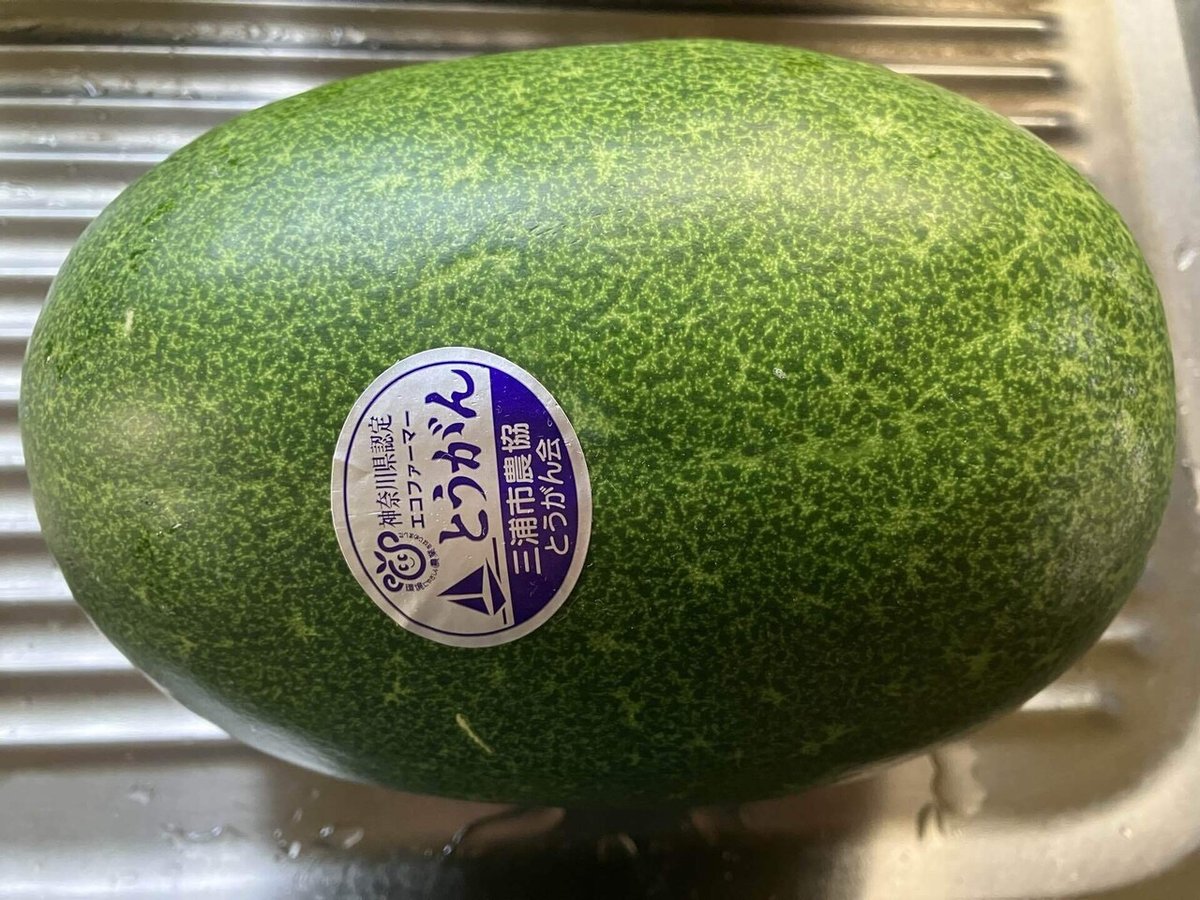
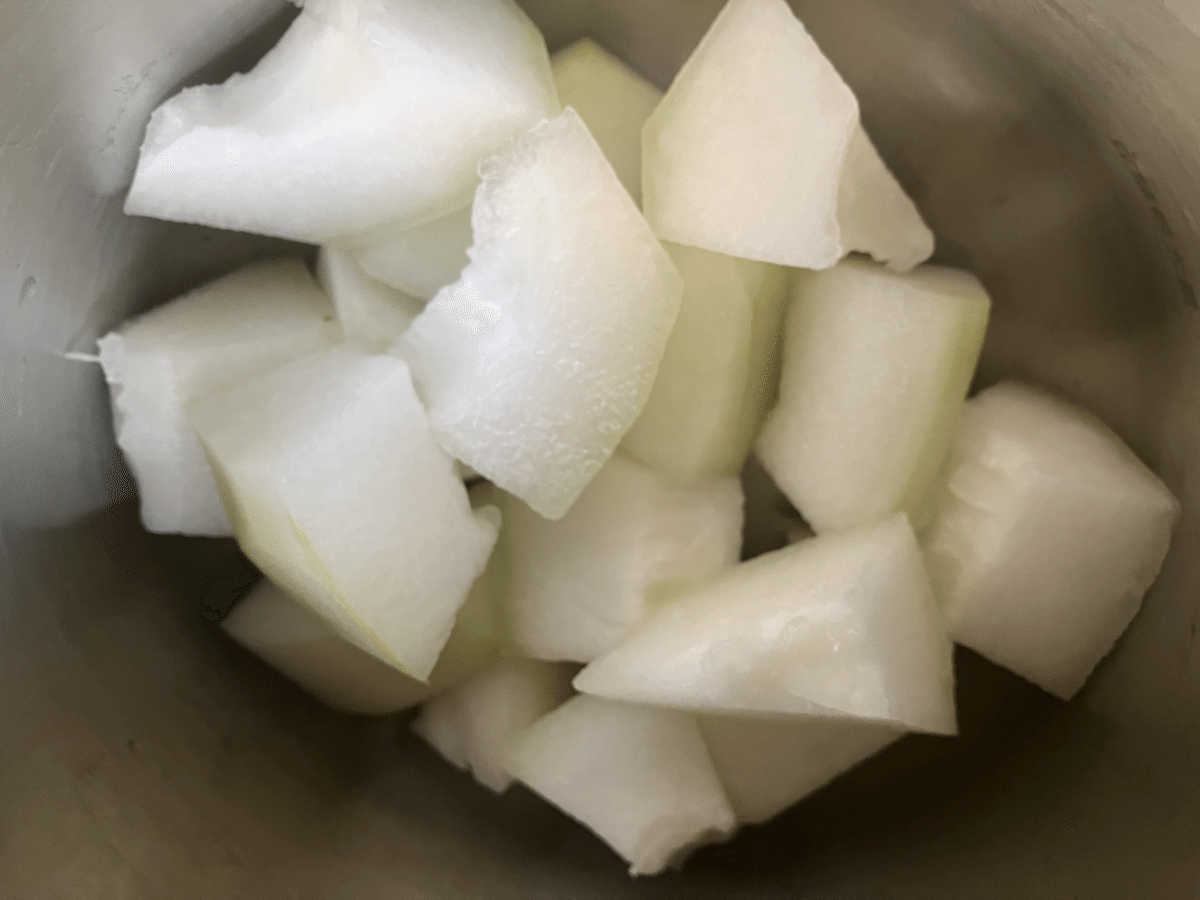


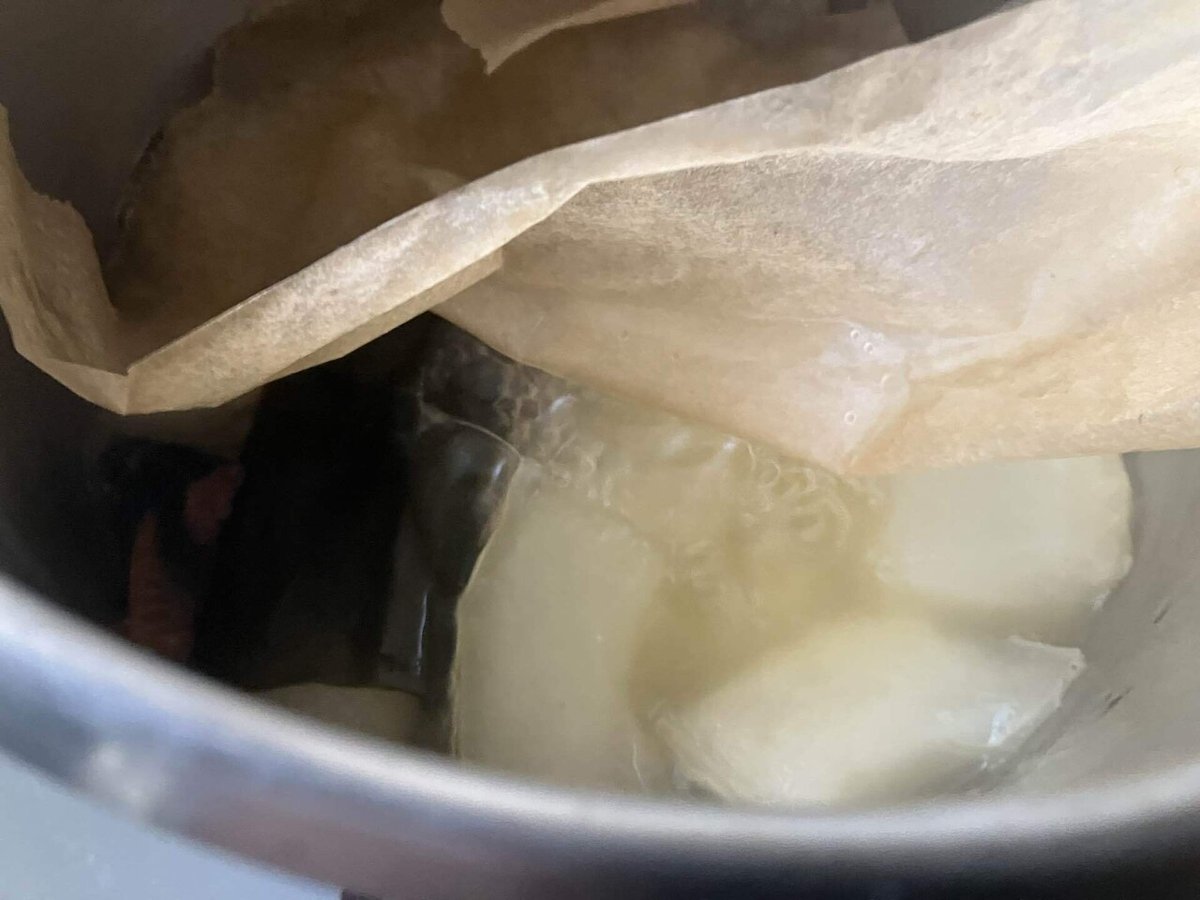
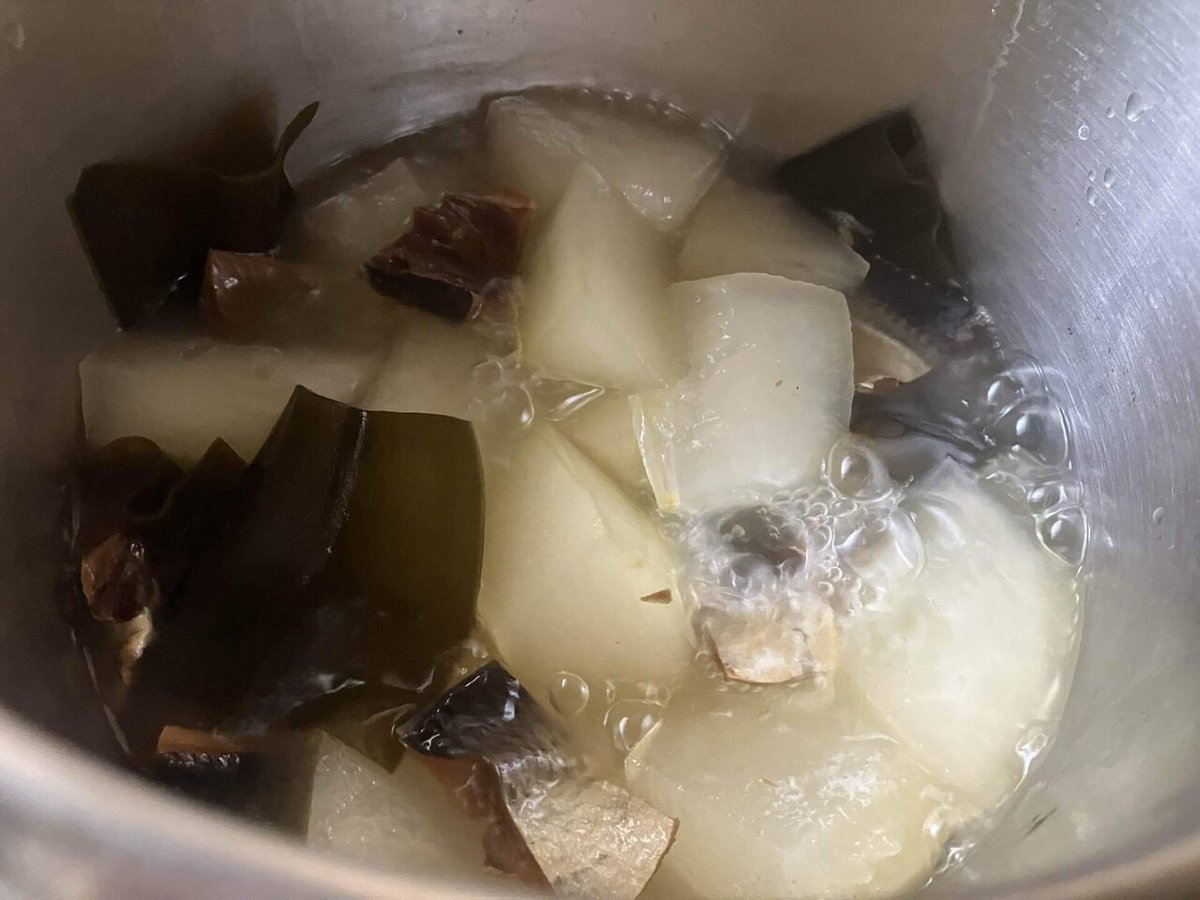
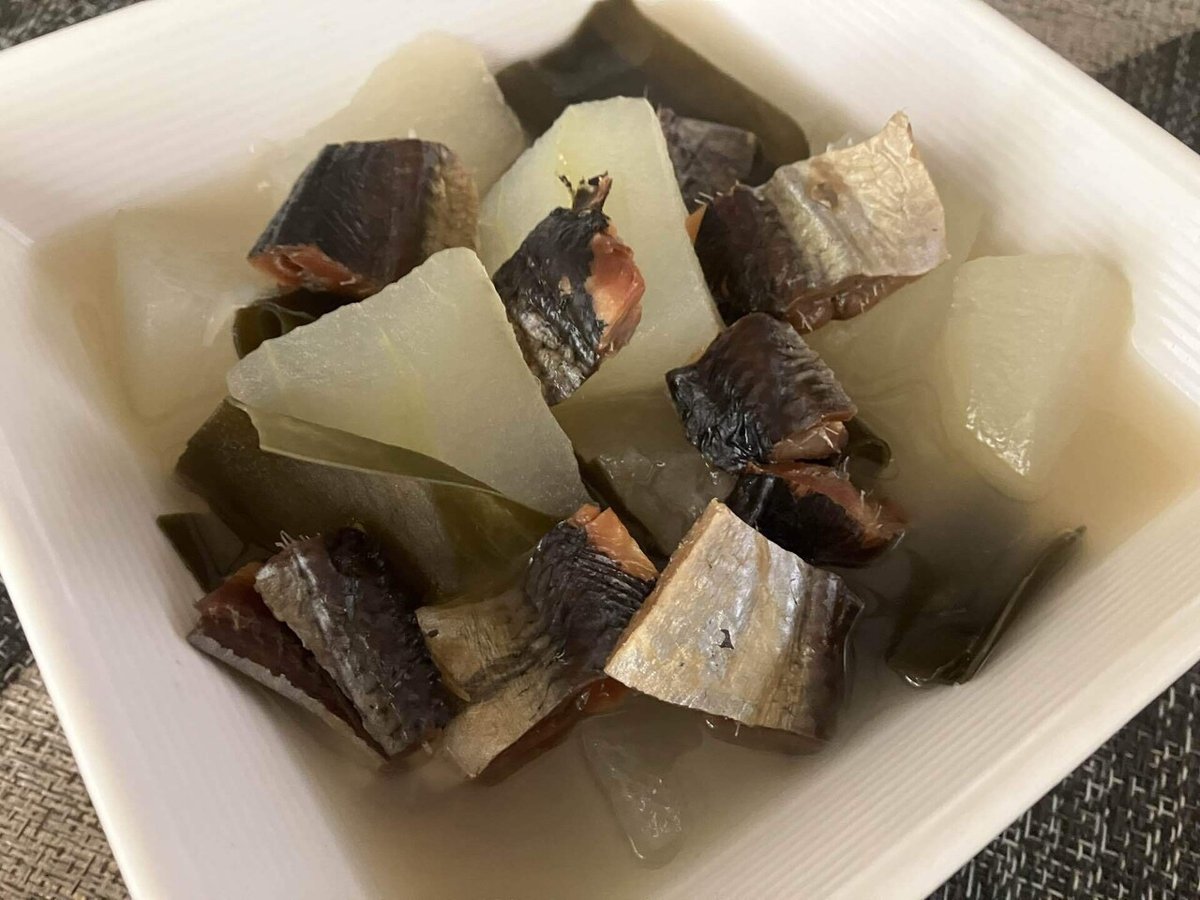
Tips and tricks:
コツと応用のヒント:
手軽さを求めるなら、もちろん半乾燥のソフト身欠き鰊を使っても良いが、冷凍保存必須なので、保存素材としての乾燥食材の活用というこの記事の趣旨からは外れてしまう。
身欠き鰊に、お湯を注いで、しばらく置いて、捨ててから、水に浸け直せば、早く戻すこともできる。えぐみが気になるようであれば、米のとぎ汁か、米をぱらぱらっと入れた水で戻せば、灰汁が吸着されて、えぐみが緩和する。
冬瓜は皮が非常に硬いので、いくつかのブロックにまず切り分け、まな板に置いて、パイナップルのように、皮を削ぎ取ると良い。手に持ったままだと、怪我をし易いので、十分注意する。いわゆる「翡翠冬瓜」にするなら、鋭利な刃物かガラス片などで、表面の皮だけ薄くこそげるように剥くと、緑色の色素を残すことができる。
僕が昆布を加えているのは、大根などに比べて、冬瓜は旨みや甘みの成分が少なく、淡白なので、昆布で旨みを補うため。ただ、そこは好みや、献立の組み立て方でも違ってくるので、昆布は必須ではない。ここでは町屋のおばんざいを想定しているので、昆布を入れている。昆布も一緒に食べてしまうなら、柔らかめの昆布を一口大に切って、取り除かずに、そんまま一緒に提供しても良い。
味付けは、関西風に、塩と少量の薄口醤油だけでつけているけど、冬瓜は淡白なので、好みによっては、薄口醤油を濃口醤油に換え、味醂などで甘さを補う味付けにしても、構わない。
柔らかく煮上がった直後の冬瓜は白っぽいが、そのまま放冷する過程で、出汁が染み込み、冬瓜自体も透明感のある仕上がりになる。
落とし蓋をして、ゆっくり炊けば、煮崩れることはない。
出汁が美味しいので、たっぷりの出し汁と一緒に提供すると良い。暖かいままでも、冷やしても良い。
鰊はヨーロッパでも、昔から大漁に消費されていて、あちらの料理にも登場する。身欠き鰊をワインと煮るのもありだ(以前の記事にレシピがあります)。
ここでは、昔に比べるとやや値の張る身欠き鰊を使っているが、お相手の乾物の魚は、煮干し(乾燥鰯)やちりめんじゃこ、氷下魚など、他の魚種のものでも構わない。煮干などの小さい乾燥魚は水で戻す必要はない。鰊の味は格別だけど、現代では、漁獲量の激減している鰊をわざわざ使うより、流通量の多い煮干しを使う方が庶民的と言えるのかもしれない。
ちなみに、冬瓜のワタや皮は、捨てずに活用することができる。ワタは、種を取り除けば、酢の物や汁物の実に、普通に使える。大根おろしのように使ったり、オムレツに入れるのもありだ。皮は、きんぴらなどになるが、さほどは美味しくはないので、無理して食べるより、煎じて健康茶として飲む方がおすすめ。利尿効果があり、体の浮腫みを取る効用が漢方で謳われている。
If you want to make it easier, you can of course use semi-dried soft fillets of herring, but this requires freezing, so it goes against the purpose of this article, which is to use dried ingredients as preserved materials.
You can quickly rehydrate the fillets by pouring hot water over them, leaving them for a while, discarding them, and then soaking them in water again. If you are bothered by the bitter taste, soaking it in rice water or water with a little rice in it will absorb the scum and reduce the bitterness.
The skin of winter melon is very hard, so first cut it into several blocks, place it on a cutting board, and scrape off the skin like a pineapple. Be careful not to hold it in your hand as you can easily get hurt. If you want to make what is known as "jade winter melon," you can use a sharp blade or a piece of glass to scrape off only the surface skin, leaving the green pigment.
I add kelp because compared to radishes and other foods, winter melon has less umami and sweet ingredients and is bland, so the kelp adds umami. However, this depends on your preferences and how you plan to assemble the menu, so kelp is not essential. Here, kelp is added because it is based on the traditional obanzai style of a town house. If you are going to eat the kelp as well, you can cut the soft kelp into bite-sized pieces and serve it together with the dish without removing it.
It is seasoned in the Kansai style with just salt and a small amount of light type soy sauce, but since winter melon is light in flavor, you can replace the light type soy sauce with dark type soy sauce and add mirin or other seasonings to add sweetness, depending on your preference.
Winter melon is whitish immediately after being boiled until it is soft, but as it is left to cool, the broth will soak into it and the melon itself will become translucent.
If you cover it with a drop lid and cook it slowly, it will not fall apart.
The broth is delicious, so it is best served with plenty of it. It can be served warm or chilled.
Herring has long been consumed in large quantities in Europe, and appears in Scandinavian and German cuisine. Another application is boiling Japanese herring fillets in wine (see my previous article for a recipe).
Here, we use dried herring, which is a little more expensive than in the past, but you can use other types of dried fish such as dried sardines, dried whitebate, and ice fish. Small dried fish such as dried sardines do not need to be soaked in water. The taste of herring is exceptional, but in modern times, it may be more common to use dried sardines, which are more widely available, rather than going to the trouble of using herring, whose catch has been drastically reduced.
By the way, you can also use the pulp and skin of winter melon instead of throwing it away. If you remove the seeds, the pulp can be used as a regular ingredient in vinegared dishes or soups. It can also be used like grated daikon radish or added to omelets. The skin can be made into kinpira, but it's not particularly tasty, so rather than forcing yourself to eat it, it's recommended that you brew it and drink it as a health tea. It has a diuretic effect and is touted in Chinese medicine for its effectiveness in reducing swelling in the body.
Guide to where to get ingredients and equipment 材料と機材の入手先ガイド
※Amazonのアフェリエイトに参加しています。もしご購入の際はここからクリックしてご購入いただけると、コーヒー代の足しになるので、嬉しいです。ちなみに僕はコーヒー依存症です。
*I participate in Amazon affiliate programs. If you purchase this product by clicking here, it will help pay for my coffee, so I would be verhy happy. By the way, I am addicted to coffee.
この記事が気に入ったらサポートをしてみませんか?
